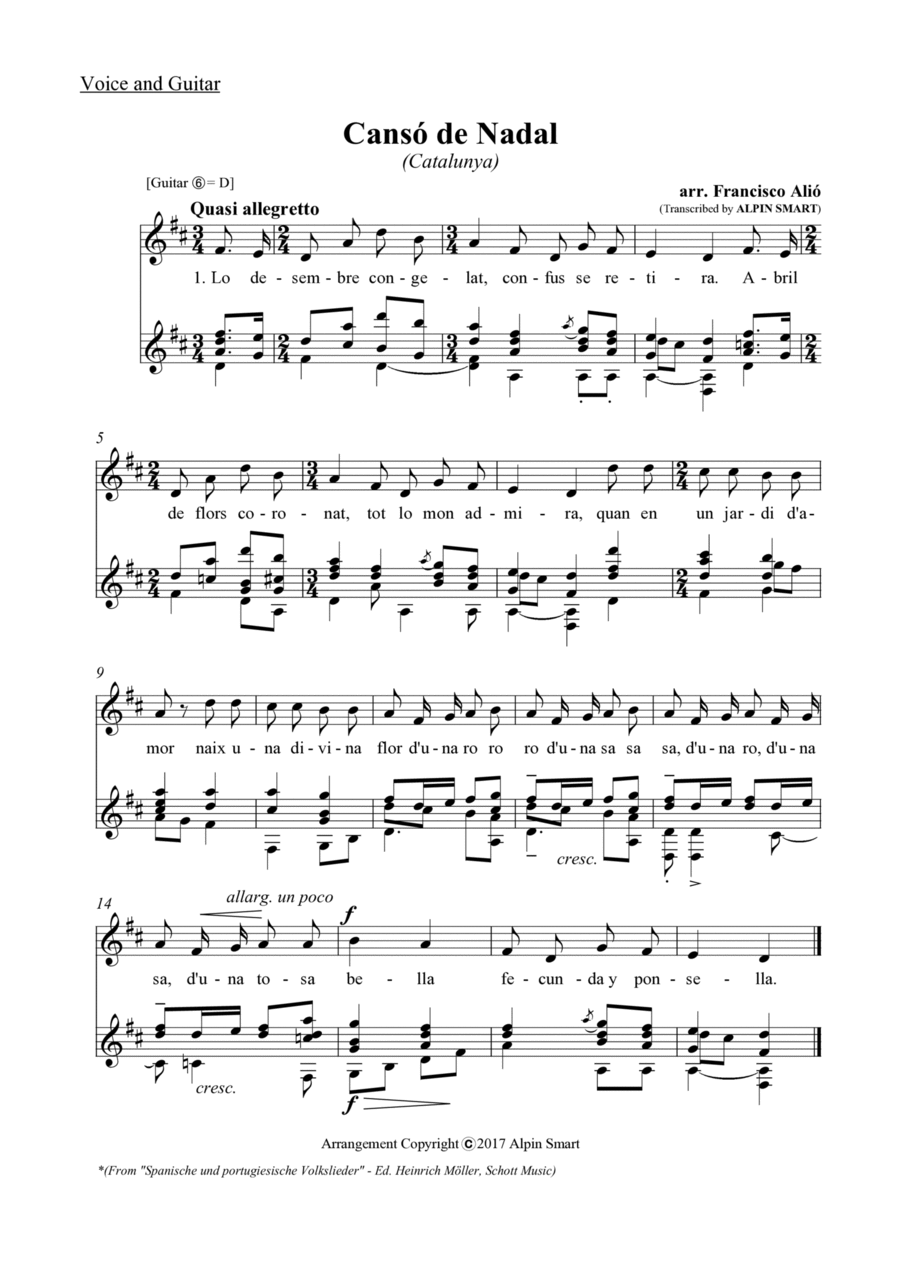Guitar,Piano,Vocal,Voice - Level 3 - Digital Download SKU: A0.504172 Composed by Arranged by Francisco (Francesc) Alió i Brea (1862-1908, Barcelona). Arranged by Alpin Smart (transcription for voice and guitar). Children,Christmas,Folk. Score. 1 pages. SmartWorks Publications #116103. Published by SmartWorks Publications (A0.504172). Catalan folk songs have a quality quite unlike anything else, and certainly nothing like the music we so readily associate with Spain - 'Flamenco' and 'Cante jondo'. The most famous of these is the achingly beautiful and utterly haunting El Cant dels ocells (Song of the Birds), made famous by the great Catalan cellist, Pablo Casals, and set (twice!) by Joaquin Nin, as well as an exquisite solo guitar version by Federic Mompou. All have this haunting and ethereal quality. These songs are well-known as solo guitar works by Miguel Llobet (1878-1938, Barcelona) in his celebrated 16 Folksong Settings, made famous by Segovia, and much-loved by generations of guitarists.
